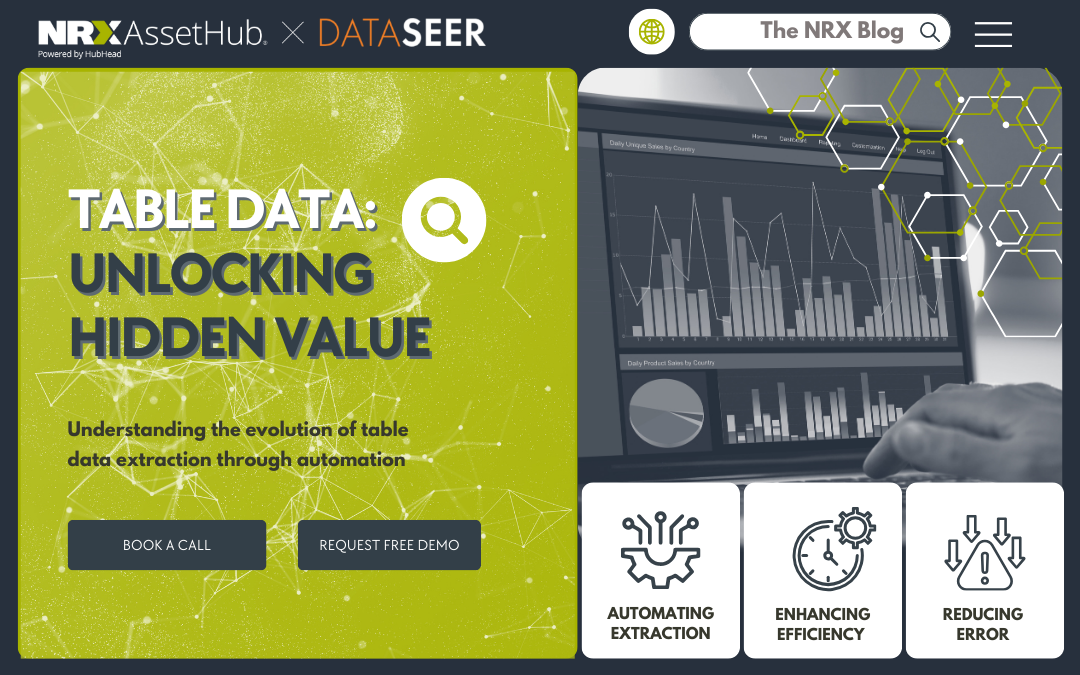In the previous blog, we explored the many challenges that organizations face when extracting valuable information from technical tables. Manual extraction is tedious, prone to errors, and expensive, especially when dealing with high volumes of data. Fortunately, advancements in automation are changing the game, helping organizations unlock the hidden value within their table data.

Why Table Data is a Hidden Asset
Technical tables often hold vital information about equipment, processes, and materials, such as:
- Bills of Materials (BOMs): Essential for inventory tracking and maintenance planning.
- Compliance Records: Crucial for audits and regulatory requirements.
- Predictive Maintenance Data: Key to minimizing downtime and improving reliability.
Despite its importance, this data often remains trapped in non-digital formats or poorly structured documents. Traditional manual methods to extract and utilize this information can lead to inefficiencies and missed opportunities.

Automation: The Key to Unlocking Value
Automation is revolutionizing how table data is extracted and used. By leveraging AI and computer vision, organizations can unlock the true potential of their data.
- Simplifying Data Discovery
Automated tools can identify and capture table structures, even in complex documents like non-searchable PDFs. This capability eliminates the need for labor-intensive manual searches.
- Standardizing Data for Actionability
Once extracted, table data is organized into standardized formats like CSV, enabling seamless integration with CMMS or EAM systems. This ensures consistency across databases and workflows.
- Reducing Cost and Time
Automation transforms a tedious, days-long process into a matter of minutes. Large volumes of data can be processed simultaneously, freeing up resources for other priorities.
- Enhancing Accuracy
Unlike manual methods, which are prone to errors, automation ensures precise data extraction. Every row, column, and cell is captured reliably, improving the quality of decisions based on this data.
- Enabling Scalability
As operations grow, the ability to process more data without scaling the workforce becomes a competitive advantage. Automation allows organizations to adapt effortlessly to increased demands.

Real-World Applications of Table Data Automation
When organizations unlock the value of their table data, they can drive significant improvements:
- Inventory Management: Automated extraction of BOMs ensures accurate inventory data, which supports better procurement and maintenance planning.
- Regulatory Compliance: Quickly accessing and standardizing compliance data helps organizations meet stringent audit requirements with ease.
- Predictive Maintenance: Table data feeds advanced algorithms, enabling precise maintenance schedules and reducing unexpected equipment failures.

From Hidden Value to Strategic Advantage
Unlocking the hidden value in table data isn’t just about extracting information—it’s about transforming how organizations operate. Automation allows teams to shift their focus from manual data wrangling to higher-value activities, like analysis and strategic planning.
By embracing automation, companies can harness their data to improve reliability, efficiency, and decision-making. Technical tables are no longer just static documents—they’re dynamic tools for driving operational success, and a cornerstone of smarter, data-driven asset management.
How Can We Help You?
HubHead and DataSeer’s AI Service combines human-level understanding with machine speed to build a scalable knowledge data store of engineering designs. By integrating these solutions with your existing EAM/CMMS systems and creating a digital twin, you can enhance decision-making and streamline your maintenance processes. Contact us for a free demo or book a call.
Utilizing Drawing Data for Accurate Cost Estimation
The Challenges of Table Data Extraction
The Tedious Nature of Creating Piping Lists Manually
Share this article




